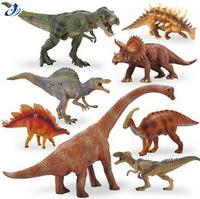Лабокания – один из малоизученных видов плотоядных динозавров. Обитал этот ящер более 70 миллионов лет назад на территории современной Калифорнии в позднем меловом периоде. Назван динозавр в честь скалы Ла Бокана в Северной Америке, где в 1974 году были найдены его останки.
Летом 1970 года Национальным Географическим Обществом, была организована коллективная палеонтологическая экспедиция, возглавляемая геологом Уильямом Дж. Моррисом, в Арройо-дель-Росарио в Калифорнии. Во время поисков, волонтер Джеймс Харли Гарбани обнаружил скелет теропода, обитавшего в поздний меловой период.
На данный момент найдены лишь череп и несколько костей скелета этого существа, поэтому трудно даже установить его внешний облик. Судя по найденным останкам, лабокания имела длину около 7 м и весила около 3 тонн. Строение черепа этого динозавра резко отличается от других хищников: он очень узок и вытянут в передней части, из-за чего напоминает голову современных ящериц и змей.
Огромные острые зубы лабокании выдают в динозавре хищника, но, по мнению специалистов, он был тяжёлым и неповоротливым, благодаря чему мог подвергаться нападениям своих более ловких сородичей. Вероятно, в качестве дополнительной защиты лабокании служила её толстая кожа.
Paleoartist - Brett Booth
На данный момент найдены лишь череп и несколько костей скелета этого существа, поэтому трудно даже установить его внешний облик. Судя по найденным останкам, лабокания имела длину около 7 м и весила около 3 тонн. Строение черепа этого динозавра резко отличается от других хищников: он очень узок и вытянут в передней части, из-за чего напоминает голову современных ящериц и змей.
Огромные острые зубы лабокании выдают в динозавре хищника, но, по мнению специалистов, он был тяжёлым и неповоротливым, благодаря чему мог подвергаться нападениям своих более ловких сородичей. Вероятно, в качестве дополнительной защиты лабокании служила её толстая кожа.

















